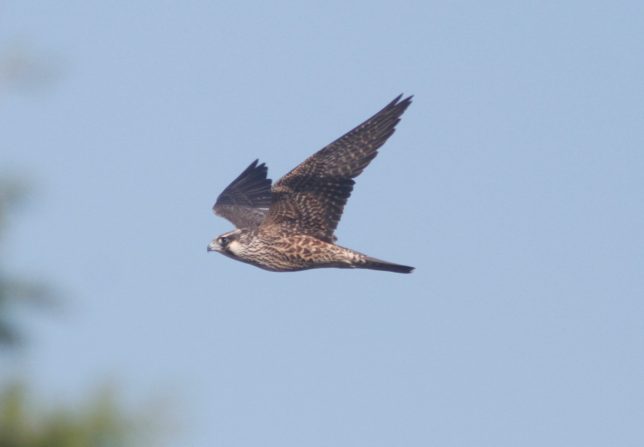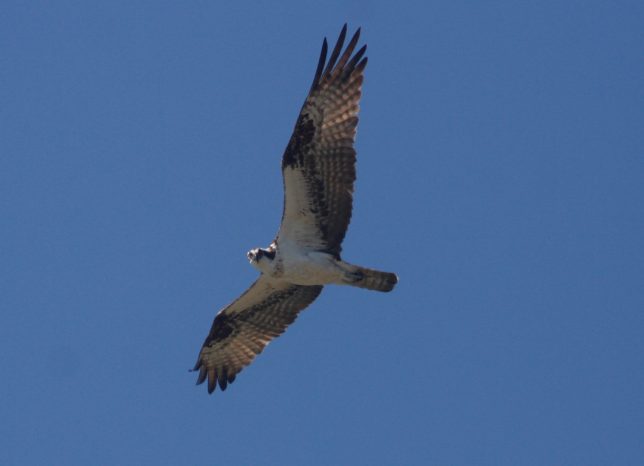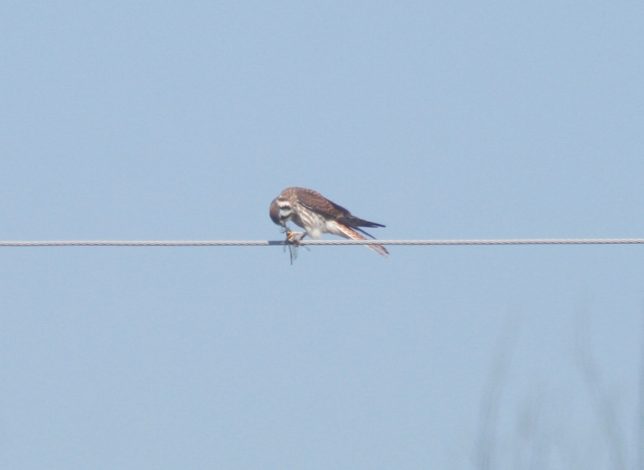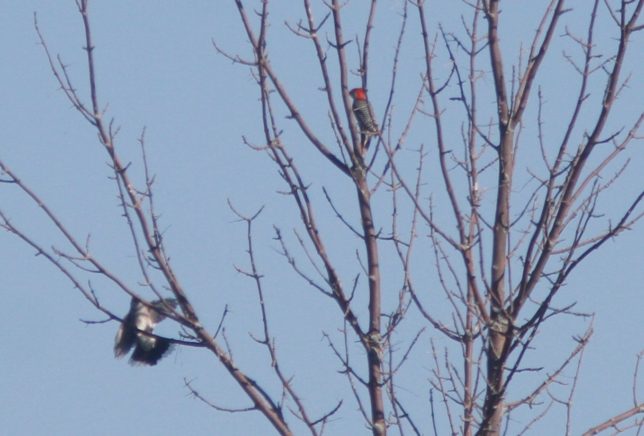Raptors: Raptors have been rather good the last 2 days and slowish on the 12th. Highlights on the 12th included a lone Osprey, and a Peregrine Falcon that remained in the general area for most of the day, including making a really nice pass over the count site.
Yesterday’s 202 raptors were dominated by 4 species: 58 Turkey Vultures, 21 Bald Eagles, 87 Sharp-shinned Hawks, and 26 Broad-winged Hawks. Of the 58 Vultures, 38 crossed the straits, while just 2 Broad-winged Hawks made the crossing. A total of 9 American Kestrels was the second best day this season, and the last three days have seen them start to pick up.
Today’s flight of 190 birds was dominated by 3 species, all of which have seen their best days so far this season. Sharp-shinned Hawks reached triple digits for the first time, with 108 recorded. Broad-wingeds had their best showing thus far with 48 birds, and 13 American Kestrels was rather nice to see. A single Northern Harrier was the first in 12 days, but hopefully they will start picking up when the weather finally shifts.
Up to half of the Sharpies crossed the lake today, mostly before the wind started to ‘pick up’, (from no wind, that is) while most of the rest flew towards the east side of the point. Relatively few (6-8) appeared to linger around the point. Broad-winged Hawks remained off to the north and northeast throughout the day, building their lone kettle most hours until around 2:00. No attempt at crossing was made. American Kestrels frequented the telephone wires for most of the day. A few would be on the wires briefly before deciding to make the crossing some time later. Shortly after they crossed, a few more would replenish those that had left on the wires. Most of the time it was 2 birds, but up to 4 were seen simultaneously. All combinations were seen on the wires at some point (male-male, female-female, and male-female). A few successfully caught dragonflies as well.



Non-raptors: Woodpeckers have been the highlights of the past few days. A Red-headed Woodpecker today, and a Red-bellied Woodpecker on the 12th are both relatively rare species in the U.P., especially the former. Downy, Hairy, Pileated, and Northern Flicker have all been seen the last few days, making for 6 species of woodpeckers, and a new fall goal: to see all of the annual woodpeckers in Michigan in one season at one site. Only Yellow-bellied Sapsucker and Black-backed Woodpecker remain to be seen this season. Yellow-bellied should be relatively easy, while Black-backed should be relatively hard.
Other highlights the past few days include Solitary Sandpiper, Lesser Yellowlegs, an Eastern Bluebird, and a continued finch flight, dominated by American Goldfinches.

Monarchs: Just 24 the past 3 days.
Best of the next 5 days: The weather pattern of light, southerly winds is finally coming to an end in the near future. The next 3 days looks like more of the same weather (light southerly winds, mostly sunny), which is likely to see results most similar to today and yesterday. In fact, more birds may actually be seen, as the forecast appears to be 10-30% cloud cover on each day (which makes spotting high raptors easier) versus the very unusual (for the area) 5 day stretch of nearly cloudless skies.
As good as the past few days have been, and are likely to continue to be good for the next 3 days, Tuesday is likely to be the start of one of the best stretches of hawk migration of the season. Wednesday currently looks like it’ll be one of the best days of the season, with one of the best Sharpie and Broad-winged days likely (Sharpies-hundreds, Broad-wingeds-dozens to possibly hundreds). Beyond that looks like more northerly winds, so hopefully this forecast remains true. If it does, we should have 3,000+ raptors the second half of September.
